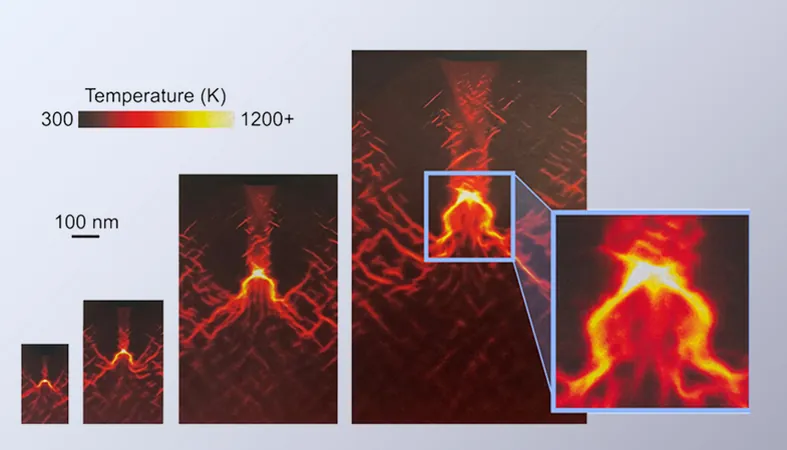
Revolutionary Insights into Hot Spot Formation in Explosives
2025-04-16
Author: Emily
Unlocking the Secrets of Explosive Chemistry
April 16, 2025 — When explosive materials encounter sudden shock waves from impacts or detonations, they can develop fiery micro-regions known as hot spots. These intense heat zones form around microstructural defects, such as tiny pores, and play a crucial role in determining whether an explosive will ignite and fully detonate. Gaining a clearer understanding of how these hot spots form and behave is essential for improving the safety and performance of explosives in fields ranging from defense to mining.
A Breakthrough in Computational Modeling
In a groundbreaking study from the Lawrence Livermore National Laboratory (LLNL), researchers have revolutionized our understanding of hot spots in insensitive high explosives, notably TATB (1,3,5-triamino-2,4,6-trinitrobenzene). Utilizing the powerful Sierra supercomputer, the team led by computational materials scientist Matt Kroonblawd has achieved unprecedented scales in molecular dynamics (MD) simulations, observing the formation of hot spots in pores as small as 300 nanometers in diameter.
The Largest Simulations Yet!
The research marks a milestone, utilizing up to 600 million atoms, making these some of the largest MD simulations ever conducted on explosive materials. By investigating how hot spots emerge when pores collapse under shock, the advances detail a complex interplay of material mechanics, transport phenomena, phase transitions, and chemical processes.
Connecting the Dots with Different Models
To deepen their findings, the research team also employed continuum-based ALE3D simulations to explore larger pores, bridging the gap between atomic details and microstructural behavior. ALE3D allows for independent adjustments to material properties, providing a complementary perspective that enriches the understanding gained from MD simulations.
Hot Spots: A Surprising Discovery
In a surprising twist, the MD simulations unveiled that hot spots forming in pores larger than 20 nanometers exhibit scale-invariant characteristics — meaning temperature distributions and structural features remain consistent regardless of the pore size, as long as it exceeds that critical threshold. This insight significantly enhances predictive modeling capabilities.
The Link Between Strength and Behavior
Further analysis revealed that this scale invariance is intrinsically linked to the mechanical strength of TATB, which governs its stress-strain response. Even under ultrafast stress conditions, this response remains unchanged, confirming observations made through MD simulations and simplifying future modeling efforts.
A New Era for Explosive Development
"Such work positions molecular dynamics simulations as a cornerstone for developing broader multiscale models of insensitive high explosives, guiding the creation of new materials with enhanced safety and performance," stated Kroonblawd.
With these scientific advancements, the door opens wider for innovative explosive materials that can be utilized with greater confidence and effectiveness in various applications.









 Brasil (PT)
Brasil (PT)
 Canada (EN)
Canada (EN)
 Chile (ES)
Chile (ES)
 Česko (CS)
Česko (CS)
 대한민국 (KO)
대한민국 (KO)
 España (ES)
España (ES)
 France (FR)
France (FR)
 Hong Kong (EN)
Hong Kong (EN)
 Italia (IT)
Italia (IT)
 日本 (JA)
日本 (JA)
 Magyarország (HU)
Magyarország (HU)
 Norge (NO)
Norge (NO)
 Polska (PL)
Polska (PL)
 Schweiz (DE)
Schweiz (DE)
 Singapore (EN)
Singapore (EN)
 Sverige (SV)
Sverige (SV)
 Suomi (FI)
Suomi (FI)
 Türkiye (TR)
Türkiye (TR)
 الإمارات العربية المتحدة (AR)
الإمارات العربية المتحدة (AR)